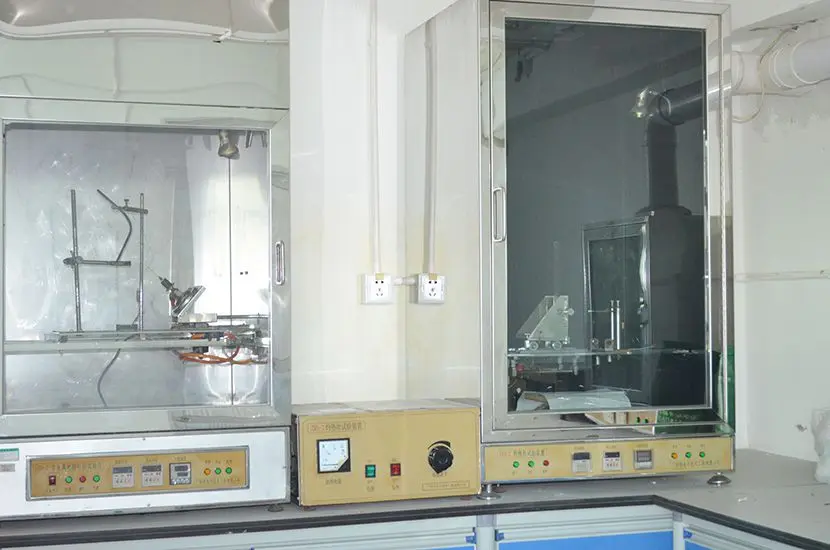
Restriction of Hazardous Substances RoHS Directive
Restriction of Hazardous Substances RoHS Directive, EU Restriction of Hazardous Substances RoHS Directive, Restriction of Hazardous Substances RoHS Directive 2011/65/EU
What is RoHS?
RoHS is a regULation enacted by the European Union to restrict the use of toxic and hazardous substances in electrical and electronic equipment (EEE). It came into effect in February 2003.
This regulation was published in the Official Journal of the European Union as:
Directive 2002/95/EC of the European Parliament and of the Council of 27 January 2003 on the restriction of the use of certain hazardous substances in electrical and electronic equipment, commonly referRED to as the RoHS Directive.
On July 1, 2011, the EU issued a new directive, 2011/65/EU, which replaced the original. This updated version came into force on January 3, 2013, and is known as RoHS 2.0in the industry.

Restricted Substances
RoHS 2.0 continues to restrict the same six substances as the original directive:
1. Lead (Pb)
2. Mercury (Hg)
3. Cadmium (Cd)
4. Hexavalent Chromium (Cr⁶⁺)
5. Polybrominated Biphenyls (PBB)
6. Polybrominated Diphenyl Ethers (PBDE)
However, it also introduced a mechanism for reviewing and updating the list. On June 4, 2015, four additional substances were added:
7. BIS(2-ethylhexyl) phthalate (DEHP)
8. Benzyl butyl phthalate (BBP)
9. Dibutyl phthalate (DBP)
10. Diisobutyl phthalate (DIBP)
As a result, RoHS 2.0 is commonly divided into:
1. RoHS 6(original six substances)
2. RoHS 10(expanded list of ten substances)
The restriction of the four additional substances became mandatory on July 22, 2019.
Substance Limit Values
The maximum allowable concentrations by weight in homogeneous materialsare as follows:
1. Lead (Pb): less than 1000 ppm
2. Mercury (Hg): less than 1000 ppm
3. Cadmium (Cd): less than 100 ppm
4. Hexavalent Chromium (Cr⁶⁺): less than 1000 ppm
5. Polybrominated Biphenyls (PBB): less than 1000 ppm
6. Polybrominated Diphenyl Ethers (PBDE): less than 1000 ppm
7. DEHP: less than 1000 ppm
8. BBP: less than 1000 ppm
9. DBP: less than 1000 ppm
10. DIBP: less than 1000 ppm
Testing Standards and Definitions
ROHS Testing follows the IEC 62321standard. The objects of testing are homogeneous materialsor components.
Definition of Homogeneous Material:
A material that cannot be mechanically separated into different materials. It has a uniform composition throughout.
Examples of homogeneous materials include:
1. Plastics
2. CeraMICs
3. Glass
4. Metals and alloys
5. Paper
6. Boards
7. Resins
8. Coatings (paint, plating, etc.)
Mechanical separationrefers to methods like unscrewing, cutting, grinding, etc.
Componentsare considered the smallest parts of an electronic product that can be separated using standard tools without damage. These include:
1. Electronic parts: unassembled printed circuit boards, resistors, capacitors, diodes, rectifiers
2. Electromechanical parts: connectors, cable insulation
3. Mechanical parts: screws, frames, housings (including plated or coated surfaces), buttons, decorative glass, and ceramic parts
Labeling Requirements
1. Under the original RoHS directive, there were no specific labeling requirements.
2. Under RoHS 2.0, before affixing the CE markto a product, manufacturers must ensure the product meets both general CE requirements and RoHS hazardous substance restrictions.
3. A technical documentation filedemonstrating RoHS Compliance must be prepared.
4. Other than the ce marking, RoHS 2.0 does not require any additional mandatory labeling.
Important Considerations
1. Lead contentis the most common failure point in rohs testing, especially in metallic connectorssuch as USB ports or copper pins.
2. Exemptionsare provided in Annex IIIof the RoHS 2.0 directive for specific uses of restricted substances. Examples include:
① Lead in copper alloys (up to 4%)
② Lead in aluminum alloys (up to 0.4%)
③ Mercury in metal halide lamps
④ And other specialized applications
3. Attention to manufacturing processesis critical.
Even when raw materials are compliant, environmental risks may arise from auxiliary materials or tools used during production—such as cleaning agents or contaminated soldering equipment.
Email:hello@jjrlab.com
Write your message here and send it to us
 What is Amazon TIC and How Can Sellers Achieve Com
What is Amazon TIC and How Can Sellers Achieve Com
 2026 Battery UN38.3 Certification (Test Report) &a
2026 Battery UN38.3 Certification (Test Report) &a
 What is the IEC 62680 Standard? Compliance Interpr
What is the IEC 62680 Standard? Compliance Interpr
 Amazon Japan December Compliance Requirements
Amazon Japan December Compliance Requirements
 How to Check a CPSC-Accepted Laboratory?
How to Check a CPSC-Accepted Laboratory?
 WEEE Registration for Waste Electrical &Electr
WEEE Registration for Waste Electrical &Electr
 MSDS Chemical Safety Testing
MSDS Chemical Safety Testing
 What Are the Differences Between UK REACH and EU R
What Are the Differences Between UK REACH and EU R
Leave us a message
24-hour online customer service at any time to respond, so that you worry!




